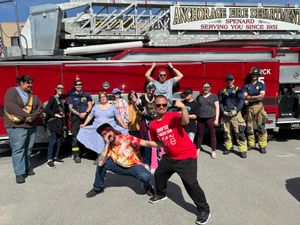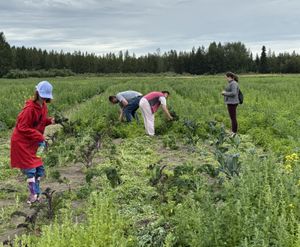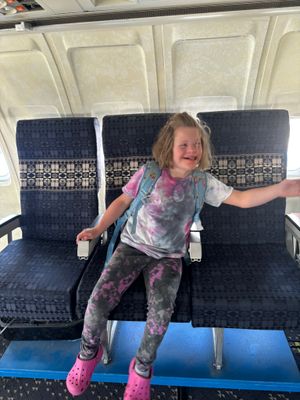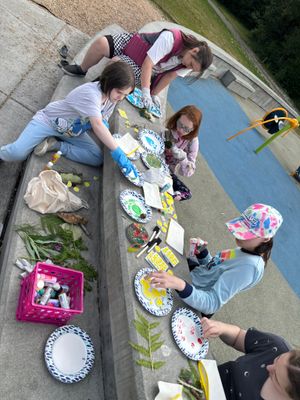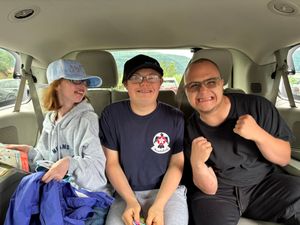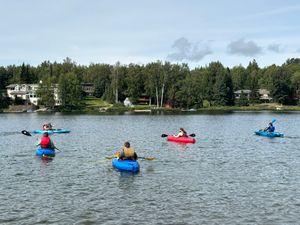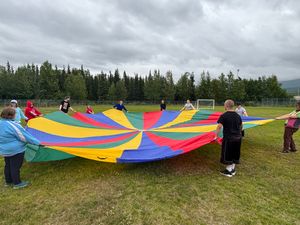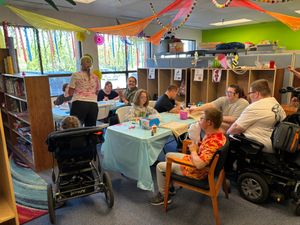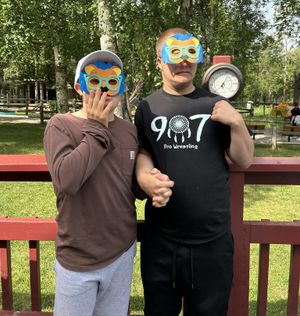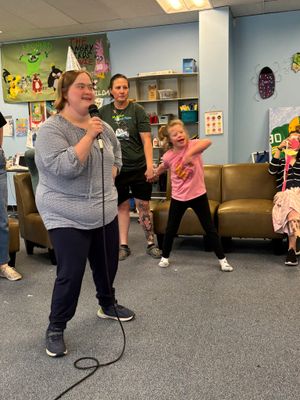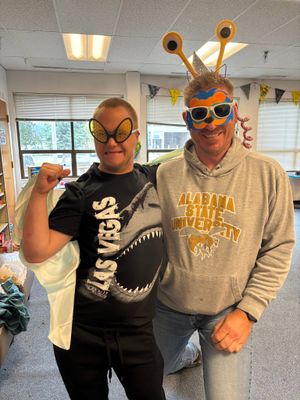Hope Receives 'Best of Alaska' Awards
November 2, 2025
Hope Community Resources, Inc. is honored to be recognized in the 2025 Best of Alaska Awards, receiving Platinum in Assisted Living and Gold in Diversity, Equity & Inclusion.

To be recognized in this way affirms that our mission, values, and the work we do every day are seen, felt, and valued across our state. These awards are especially meaningful because they were determined by your votes and voices—our community!
Our organization exists to ensure that people who experience intellectual and developmental disabilities have equal opportunities to direct their own lives, participate fully in their communities of choice, and be valued for who they are. This commitment extends not only to those we support, but also to our diverse workforce—people from many backgrounds, cultures, identities, and lived experiences who bring their whole selves to this work every day.
To be recognized in Diversity, Equity & Inclusion is a powerful affirmation that our pursuit of disability inclusion, belonging, and respect is resonating beyond our organization and into the broader culture of Alaska. It also acknowledges the importance of fostering a workplace where our employees feel seen, supported, and celebrated, because we know that meaningful inclusion begins within.
The Platinum award in Assisted Living acknowledges the high standards of person-centered supports that our employees provide each and every day. It reflects their commitment to supporting meaningful lives—filled with choice and independence.
We extend our most sincere gratitude to the people and families who choose our services, our remarkable employees statewide, the partners and advocates who strengthen our mission, and everyone who recognized our work with their votes.
View all Best of Alaska award winners
Hope will be at the Best of Alaska Showcase at the Dena'ina Center this Saturday, November 8 from 12pm-5pm to celebrate these awards with our community. Join us for a one-of-a-kind event of the very best Alaska has to offer. It's FREE to attend, with food & drinks, local vendors & creators, live music, kids' activities, and more.
Come experience all the best of the best in Alaska. We hope to see you there!

Hope's 57th Anniversary
October 28, 2025
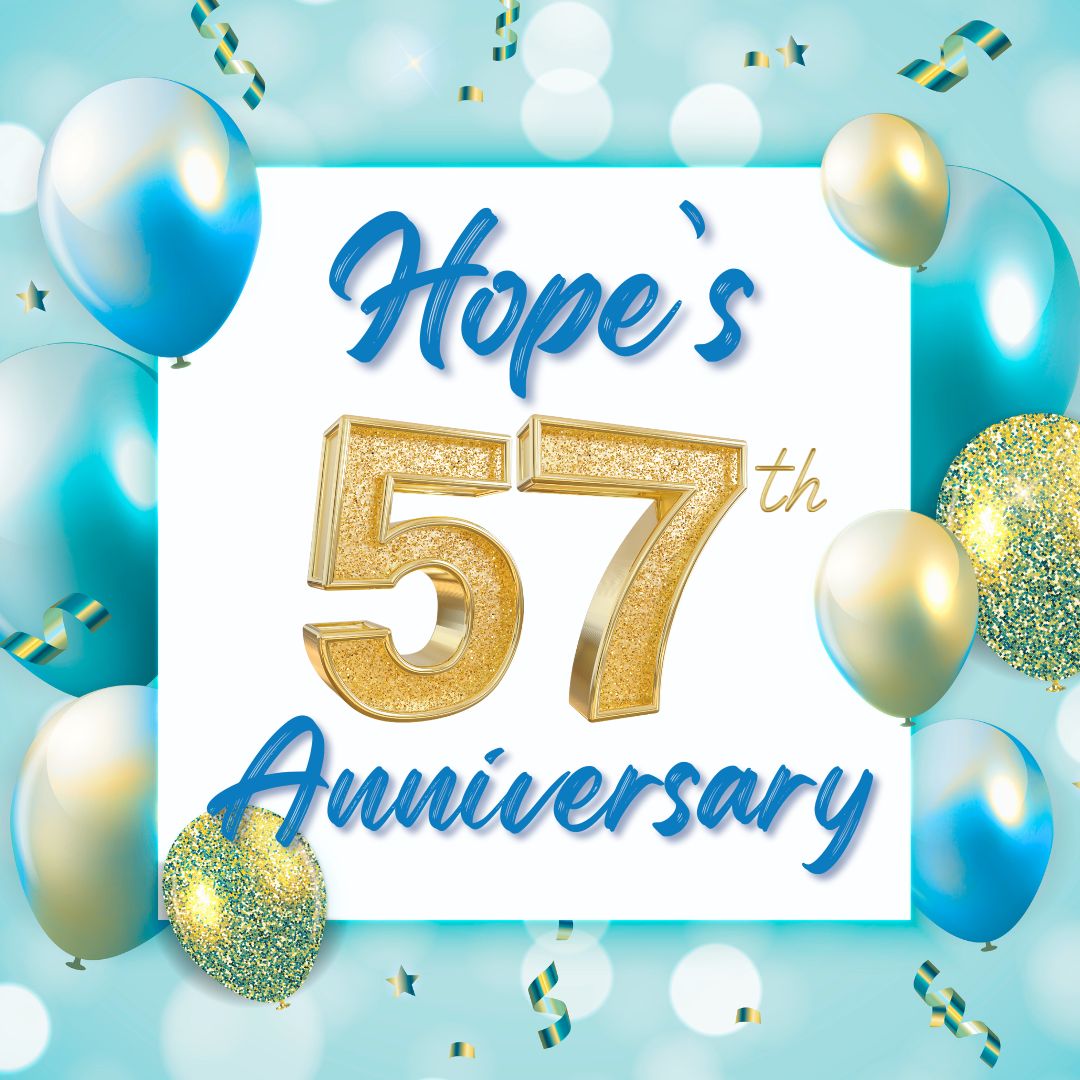
The Importance of Play for Adults
October 21, 2025
As children, play was our natural state. Yet somewhere along the road to adulthood, many of us lose touch with our playful spirit and sense of wonder. Between busy careers, family obligations, and endless to-do lists, play can feel frivolous or unproductive. But play is not just beneficial for children—for adults, it is essential for stress relief, creativity, emotional health, and building empathy and social skills.
Play helps calm and rejuvenate both body and mind. When we engage in activities that bring us joy, our bodies release natural mood-boosting endorphins. Even a few moments of lightheartedness each day can help us stay optimistic and counterbalance daily pressures. Regular opportunities for play also keeps the brain flexible and alert, improves focus, and encourages imagination and curiosity. Play refreshes us in ways that rest alone cannot.
Play in adulthood isn’t always obvious, and it looks different for everyone; one person might find delight in solving a puzzle, where another finds it in geocaching or singing. Your idea of play may come from something active, like kayaking, or something creative, like bullet journaling, or something social, like hosting a costume party, or something solo, like learning to play the drums, or even something unstructured, like doodling. The defining features of play have nothing to do with the activity itself, and everything to do with your motivation and attitude. When we approach an activity with a sense of freedom, enjoyment, and presence, that is playing.
Even if it’s been years since you embraced your playful side, all you need is a willingness to try. Think about what made you feel alive as a child—dancing, exploring, storytelling—and find ways to bring those magic moments back into your routine. Play doesn’t have to be structured or practical; it just needs to bring a smile to your face.
We are never too old to play. So add “recess” back on your to-do list and give yourself permission to live in the moment, laugh, and seek enjoyment—not just in times of celebration, but in everyday life.
Three-step plan for rekindling a playful spirit:
- Discover your play personality. Are you a storyteller, a mover, a collector, or something else? Think back to the activities you loved as a child—that will give you clues as to what may bring you joy today.
- Experiment with different ways to play. Play can be social, physical, creative, or object-focused. Your play personality may guide the style that feels most natural, but don’t be afraid to experiment.
- Try things that sound fun. Don’t worry about how good you are at it or how it looks to others. Play is about enjoying yourself, not perfection. If it doesn’t feel right, try something else.

Happy Hope Anniversary, Heather Sollenberger
October 17, 2025
We’re honored to celebrate Heather Sollenberger for her recent 10-year anniversary with Hope!
Heather first joined Hope as a supervisor, later served as the Adult Licensing Specialist, and went on to become a Mental Health Supervisor/Case Manager. For the past five years, she has led as our Director of Intensive Supports in Anchorage.
When asked what has kept her at Hope for 10 years, Heather’s answer was simple—the people! “I’m lucky to work alongside professionals who genuinely care about our community and are committed to helping others live happy, meaningful lives. While we sometimes differ in our approaches, our shared mission always brings us back together. Some of the closest relationships I’ve formed in my life were created at Hope, and I will be forever grateful for that.”
Outside of work, Heather enjoys spending time with her family and her husband Nick and their three cats — Tati, T’Chaka, and Pixel. She is proud to be an Alaska native, she is an avid crafter, and her greatest passion is gift shopping for loved ones—she often spends months finding the perfect gift.
Heather, thank you for a full decade of leadership at Hope and in our community. You make a difference—toward our mission and for every person you work with—and we’re grateful you continue to choose to be part of our team!

Hart & Hustle Podcast: An Interview with Michele Girault
October 13, 2025
- How Alaska changed the impossible choice families faced: keep your child or keep your income
- The secret to retaining staff for 20, 30, even 40+ years in mission-driven work
- Why challenging assumptions about ability is critical for inclusive leadership
- Using technology and AI to support independence without replacing human connection
- Breaking down silos through radical collaboration in the nonprofit sector
Happy Hope Anniversary, Moses Marrah
October 7, 2025
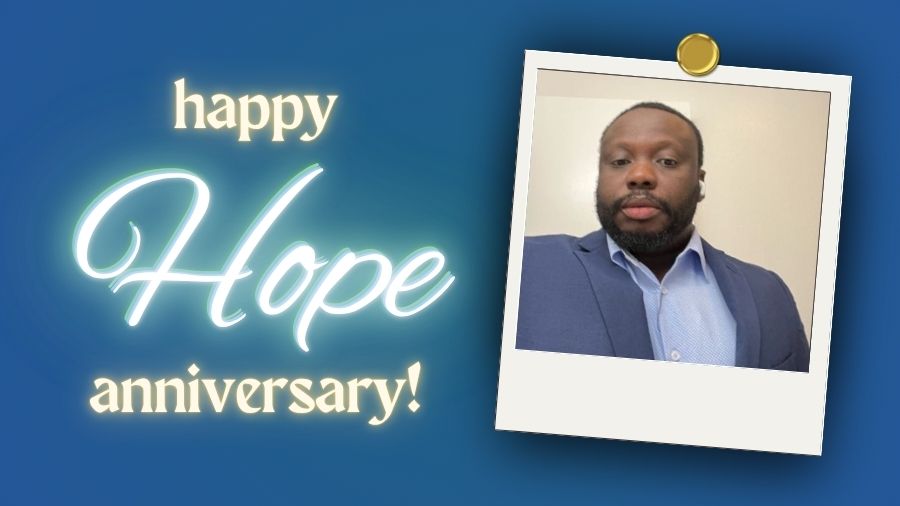
Stories of Hope | Celebrating our Amazing Direct Support Team
September 30, 2025
Earlier this month, we proudly celebrated Direct Support Professional (DSP) Appreciation Week—a special time set aside to honor the incredible people who provide essential supports every day to people with disabilities and their families. At Hope, this week is especially meaningful because our DSPs are at the very heart of our mission.
Hundreds of DSPs work across the state, and every day they show up with care and compassion to make a meaningful difference in people's lives. They provide personalized care, assist with daily living, support independence and autonomy, advocate for inclusion, and encourage community connection. Their impact is felt not only by the people they directly serve, but also by families, coworkers, and the larger community.
Because of DSPs, people who experience disabilities are supported and cared for with dignity and patience. They are respected as individuals with voices, choices, and dreams. They feel heard and seen when they share their feelings, knowing their experiences matter and their stories are valued.
Because of DSPs, the people they support can travel safely, go on community outings and attend necessary appointments, express themselves through art and other creative endeavors, and share meals with companionship. DSPs open doors—sometimes literally—that allow people to discover new places and meet new faces. These everyday moments of care, encouragement, and support add up to lives filled with meaning and joy. DSPs are there during both challenges and celebrations, ensuring that the people they serve are not only supported, but truly valued.
Because of DSPs, creativity is valued, laughter is shared, and belonging is possible.
While DSP Appreciation Week lasts only seven days, their influence is life-changing and worth celebrating year-round. In case you don’t follow Hope on social media—or may have missed the highlights—we want to share stories of just a few of the hundreds of DSPs who inspire us every single day.
Next month, Jill Balgie, who is known for her reliability and kindness, celebrates 22 years with Hope. Candi McGowan, a new Lead DSP, is already making an impact with her leadership and fresh ideas. David Ngwa, who recently reached 15 years with Hope, not only supports recipients in Anchorage but also coaches Special Olympics athletes to championship wins.
In Kenai, Wes Woodruff has been a steady guide, helping the person he supports discover new adventures—including a camping trip to McCarthy. Michael Hammett, who joined Hope in June, quickly became known for his empathy and his natural ability to connect with others.
Diana Rubio in Anchorage has devoted more than 18 years—including 15 with the same individual and family—building enduring bonds through consistency and care. In Kodiak, Jeff Joven stands out for his strong advocacy and involvement in Special Olympics, while Medi Santa Maria brings over two decades of creativity, leadership, and meaningful relationships.
In the Mat-Su Valley, Ava Makahilahila-Hefner recently relocated from Las Vegas to reopen a remodeled home, where support recipients are thriving under her leadership. At Hope’s Willow Ranch, Gena Coleman, Frank Forpahl, and Liviu Verziu foster a unique rural lifestyle community for four gentlemen, bringing both dedication and creativity to daily life.
At the Community Engagement Center, Trinity Walker has brought joy and imagination to every class and activity. In Anchorage, Dakota Nelson and Albert Manzo are both known for their reliability and ability to connect with people with both kindness and calm.
Our Utqiaġvik DSP team has been commended by state agencies for their collaborative, person-centered support at Hope’s mental health home. Back in Anchorage, Molly Tafai shines through her creativity—often singing alongside support recipients' favorite songs—while Fatu Maletino has spent nearly five years going above and beyond for her team and the individuals she supports.
In Kenai, Christina Parnell reached 10 years of service, demonstrating unwavering heart and dedication. Sonya Astad, now celebrating four years, is admired for her advocacy, eagerness to learn, and for being a role model to those around her.
Finally, in Anchorage, members of our intensive supports team—Repeka Tei, Pascaline Njemo, and Abubakar Konateh—are recognized for their leadership and deep empathy. Whether navigating medical challenges, providing dignified end-of-life care, or supporting individuals with complex needs, they embody commitment and compassion in every moment.
And this is just a glimpse!
Although we highlighted only a handful of our DSPs during Appreciation Week, every DSP at Hope deserves to be recognized and celebrated. Each person helps to create opportunities for people to thrive, to pursue their dreams, and to live full, meaningful lives. To every DSP at Hope, and the thousands across the nation, thank you for your dedication, hard work, and commitment to improving people's lives every single day. You truly make a difference—and we are honored to celebrate you, this month and always.
The Benefits of Connecting with Nature
September 29, 2025
Spending time in nature is one of the simplest and most effective ways to support whole health. Research shows that even small doses of time outdoors has big benefits—reducing stress, improving mood, sharpening focus, regulating emotions, reducing the risk of mental health disorders, improving sleep, and even faster healing.
Nature offers abundant opportunities for connection through every season. Spring brings blooming flowers and longer days, inviting activities like planting a garden that can inspire fresh energy and creativity. Summer offers rich ways to immerse in the outdoors through hiking, biking, camping, fishing, or boating. Autumn’s crisp air and colorful leaves create moments of reflection, perfect for photography walks or berry picking. And Winter reveals quiet beauty that encourages mindfulness with activities such as snowshoeing, ice skating, or building a snowman.
Nature is especially valuable during periods of stress. Simply stepping outside can create a physical and mental break from daily pressures, offering perspective and grounding. The simple acts of watching a sunset, breathing in fresh air, or feeling leaves crunch beneath your feet can bring the nervous system back into balance.
Time outdoors benefits the body as well as the mind. Physical activity in nature—often called “green exercise”—supports cardiovascular health, lowers blood pressure, and strengthens the immune system. Exposure to natural light helps regulate circadian rhythms, and fresh air increases energy and vitality. Even patients recovering from illness or surgery show faster healing when they can see greenery from their surroundings.
Even two hours per week in nature can deliver many of these lasting health benefits. Connecting with the rhythms of the natural world year-round will lead to better physical, mental, and emotional well-being, and help us develop a deeper sense of peace and harmony in everyday life.
Ways to engage in “green exercise” in Alaska year-round
- Spring
- Trail hiking
- Gardening prep
- Wildlife watching
- Summer
- Hiking under the midnight sun
- Berry picking & salmon fishing
- Trail walking or running
- Glacier and ice trekking
- Fall
- Wildlife viewing cruises
- Mountain biking
- Scenic drives
- Winter
- Skiing or snowshoeing
- Watching the northern lights
- Walking in freshly fallen snow

Flooring Upgrades in Two of our Homes
September 26, 2025
We’re excited to share some wonderful updates from two of our assisted living homes! Thanks to generous funding from the Alaska Mental Health Trust Authority (AMHT), both homes now have new luxury vinyl plank flooring throughout, making them safer, more comfortable, and more accessible for both residents and staff.
The old flooring had become worn from years of use, uneven in places, and presented challenges for those with limited mobility, visual impairments, balance issues, or those using wheelchairs and walkers. The new flooring addresses these concerns, creating a safer environment for everyone.
Beyond safety, the upgrade also improves the aesthetic of the homes. The flooring creates a more welcoming, comfortable atmosphere. Support recipients take pride in caring for their spaces, and these improvements help support their sense of ownership, well-being, and dignity. Our staff members also benefit from a more efficient workspace that minimizes maintenance and supports better hygiene.
We are incredibly grateful to AMHT for making these transformations possible. Their support directly impacts the quality of life for everyone in our homes. We also want to recognize our Maintenance team, who coordinated and completed the project efficiently, with residents’ comfort and safety top of mind.
These upgrades are more than just flooring—they are an investment in the happiness, safety, and independence of support recipients. The homes are now brighter, cleaner, safer, and more welcoming than ever, and the positive impact is already being felt by all who live and work there.
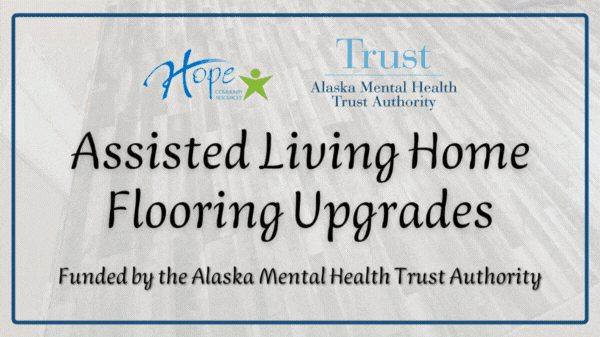
Municipality of Anchorage "Cultural Histories"
September 25, 2025
This year marks “Munification”—the 50th Anniversary of the unification of the City of Anchorage and the Greater Anchorage Borough. To commemorate, the Municipality invited Hope and many other local organizations, communities, and cultural groups to share their histories.
We are excited to share this new resource highlighting the history of Hope and the disability community. Please take a moment to read through and reflect on how our history—along with many others—have made a difference in our community and in people’s lives.
Happy DSP Appreciation Week
September 15, 2025
 |
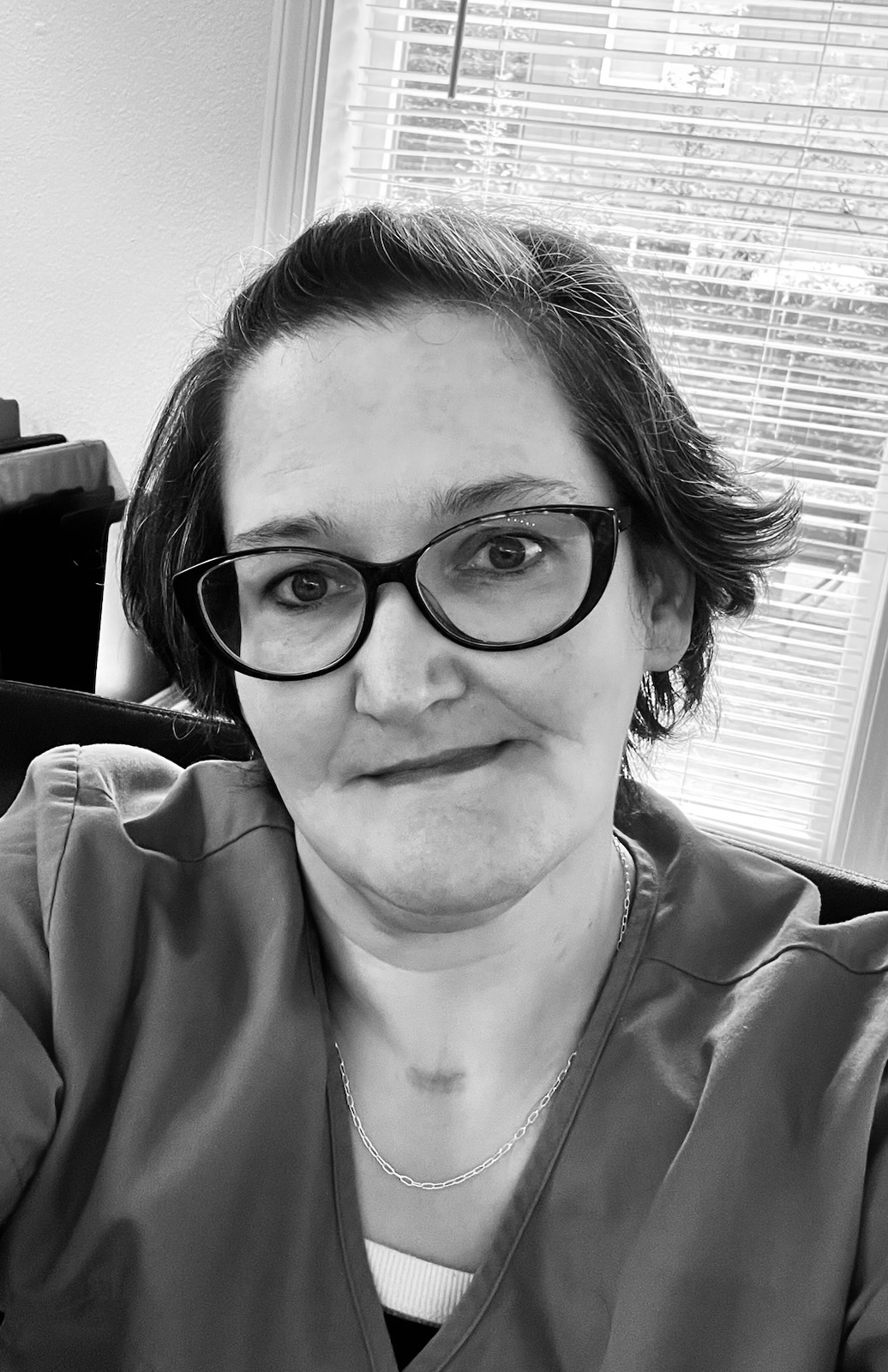 |
Happy DSP Appreciation Week
September 15, 2025
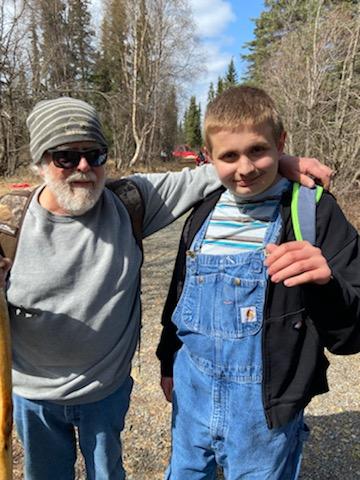 |
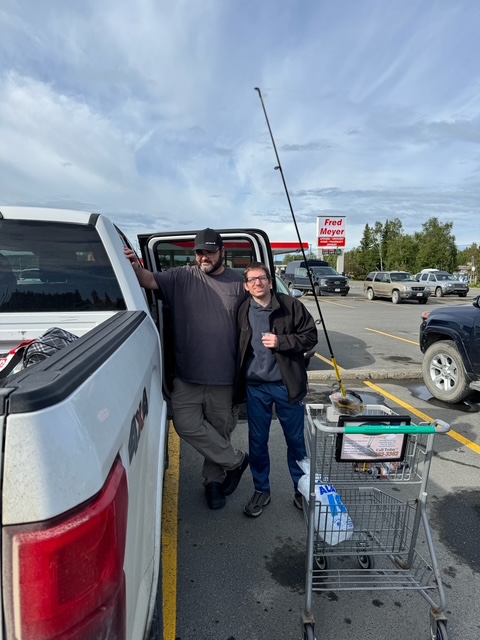 |
Happy DSP Appreciation Week
September 13, 2025
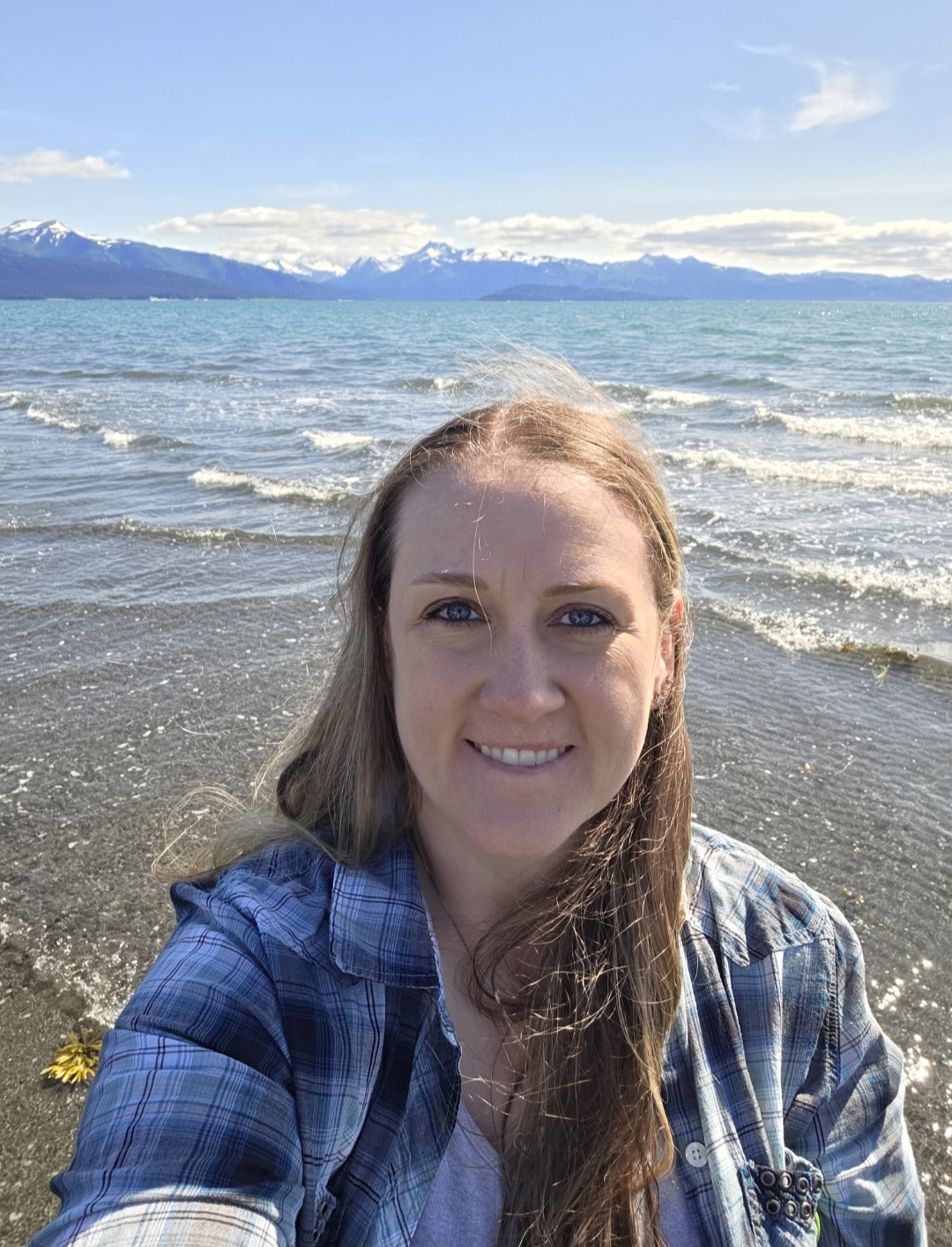
Happy DSP Appreciation Week
September 13, 2025
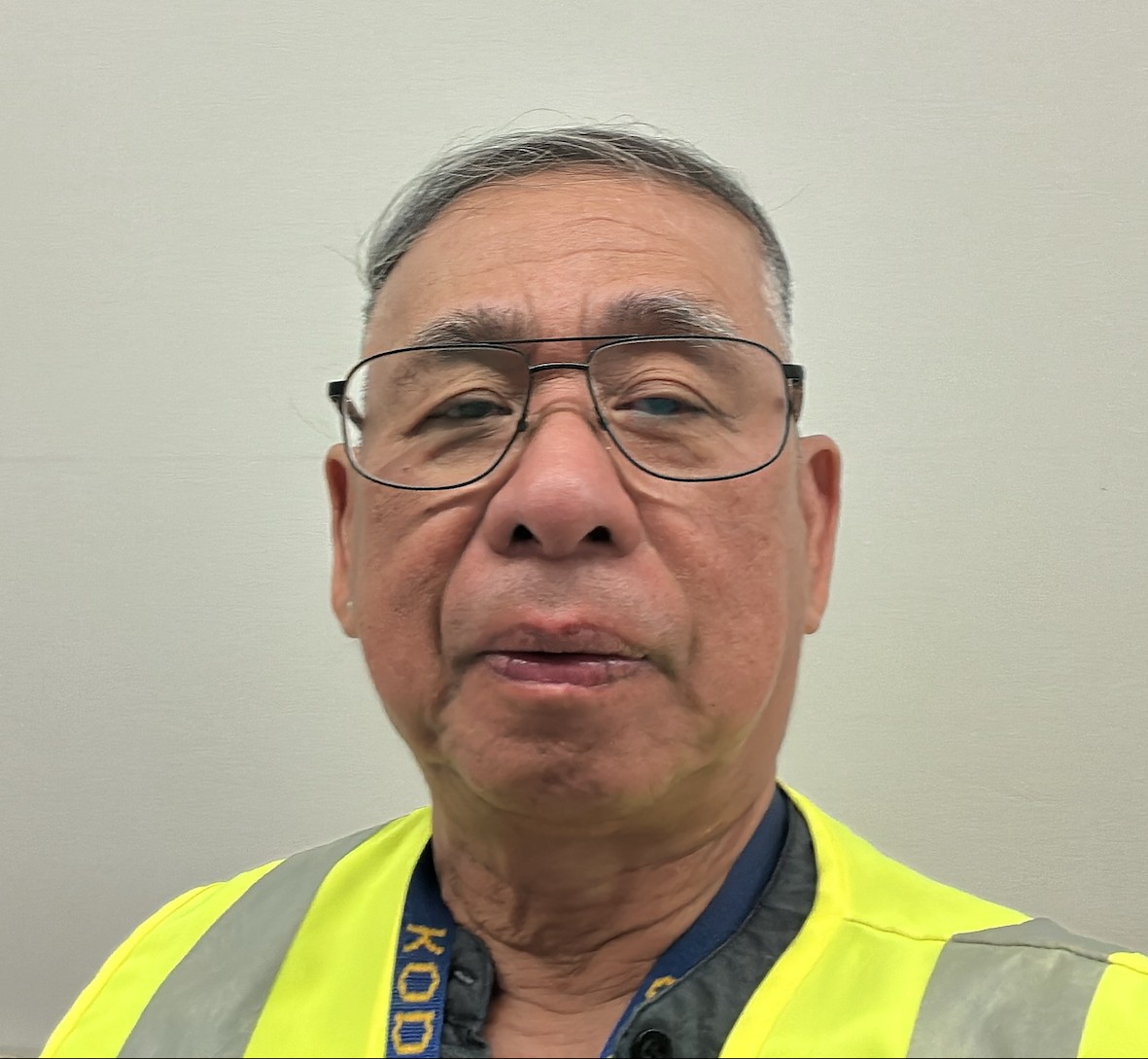 |
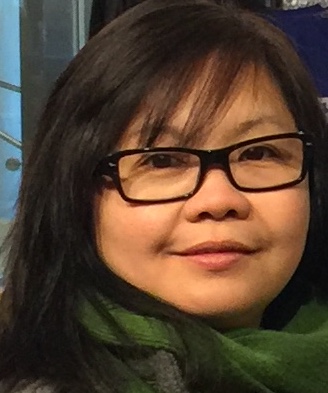 |
Happy DSP Appreciation Week
September 12, 2025
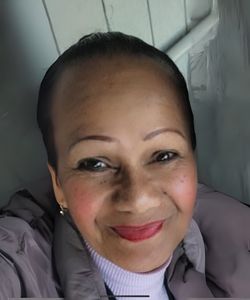
Happy DSP Appreciation Week
September 12, 2025
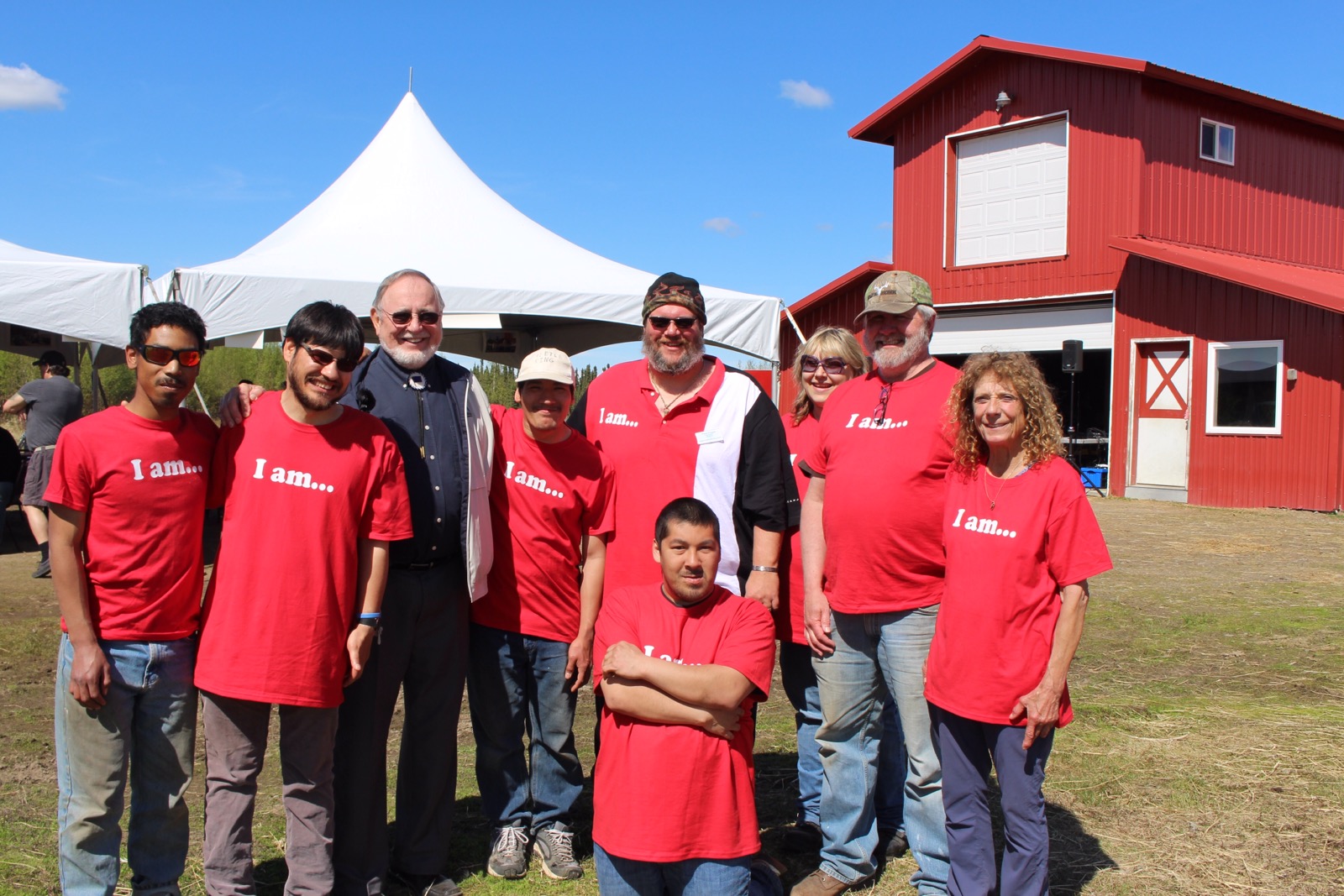
Happy DSP Appreciation Week
September 11, 2025

Happy DSP Appreciation Week
September 11, 2025
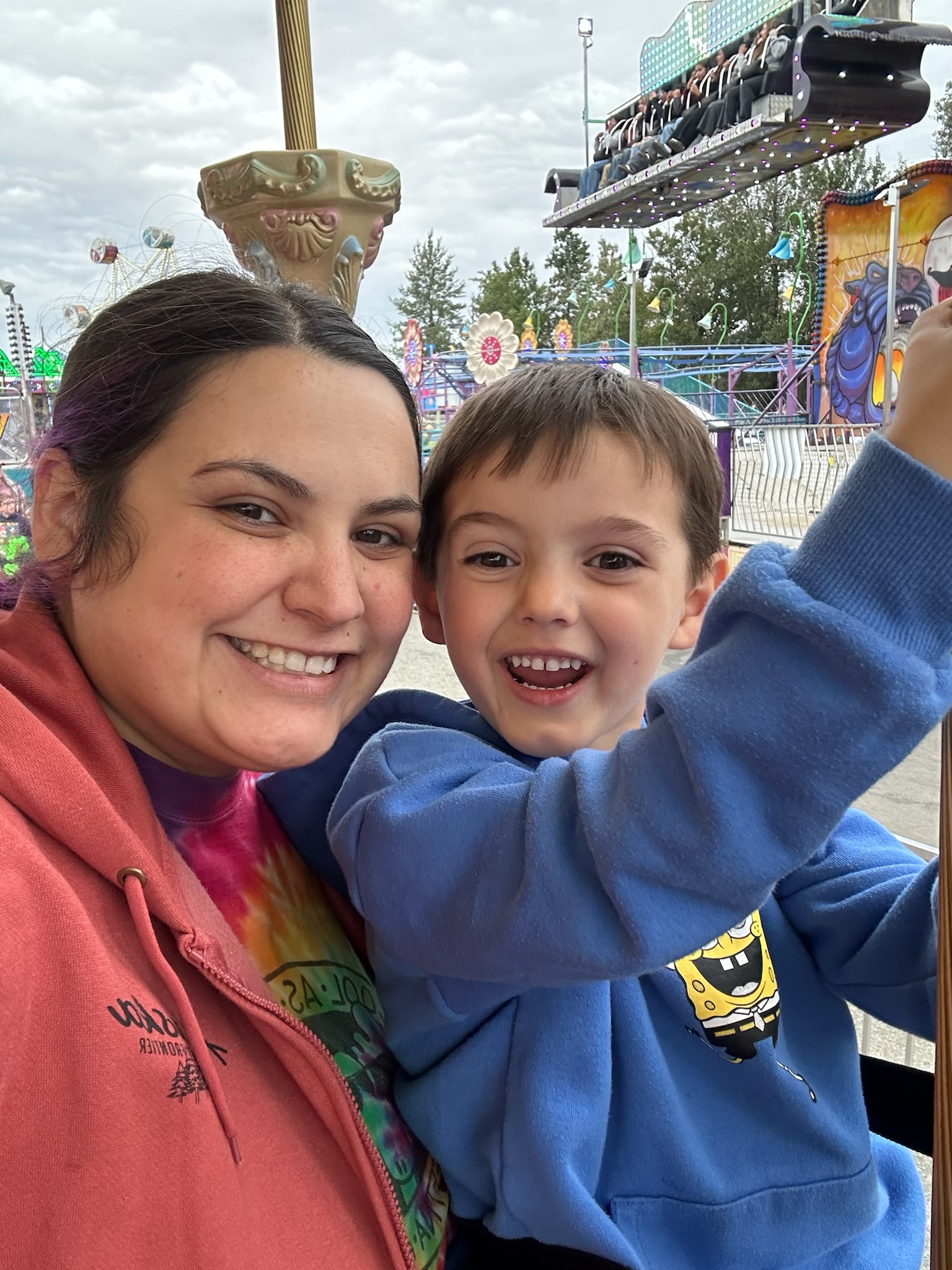 |
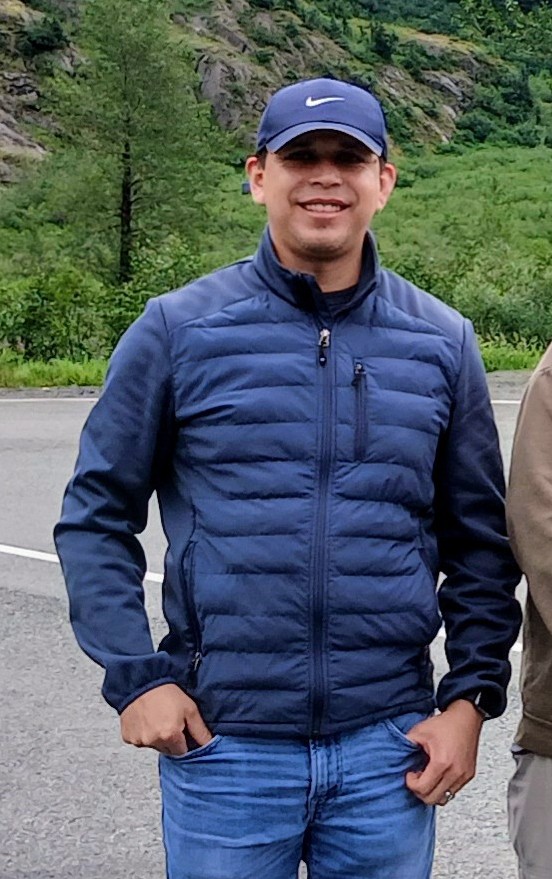 |
Happy DSP Appreciation Week
September 10, 2025
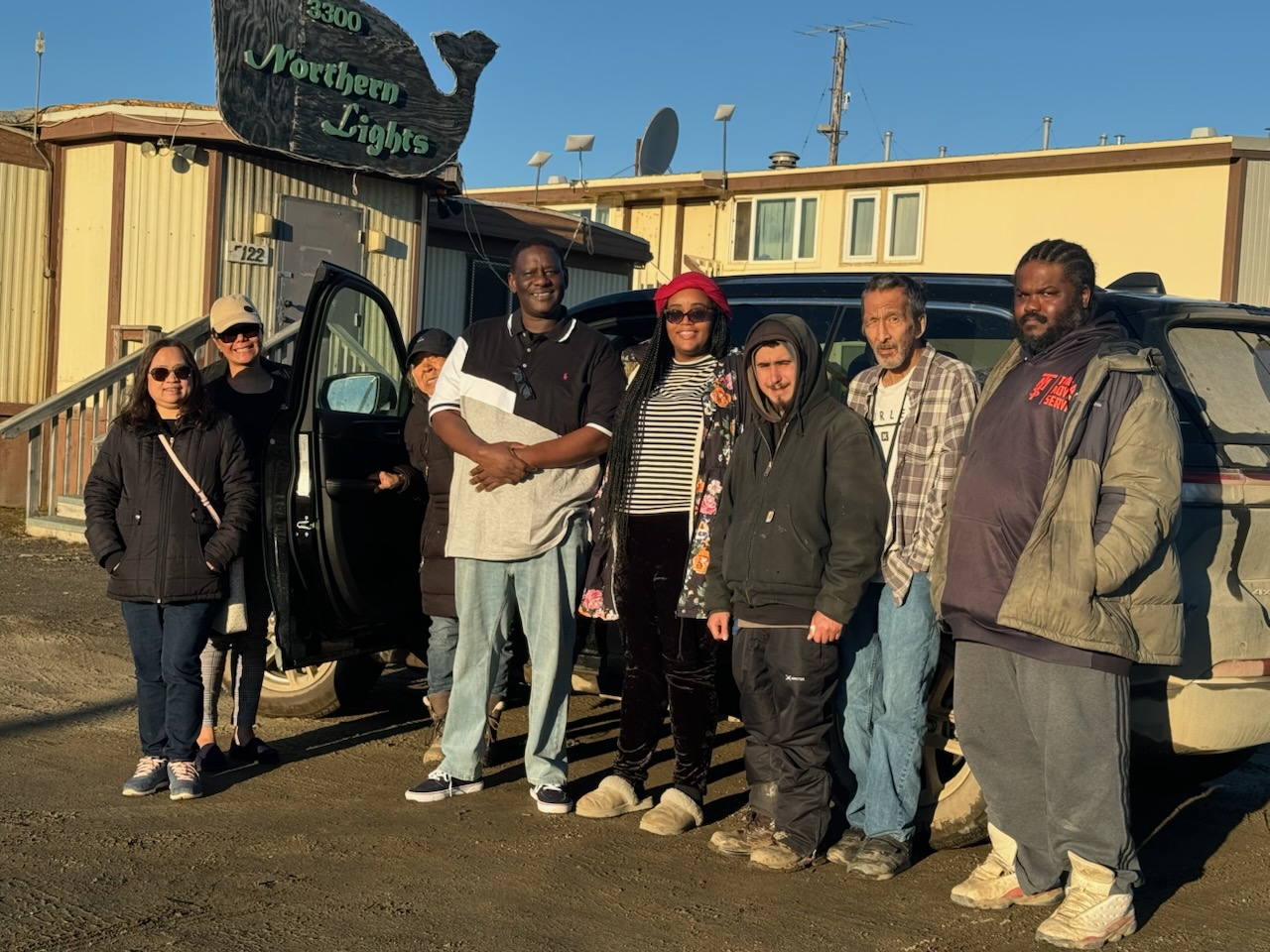
Happy DSP Appreciation Week
September 10, 2025
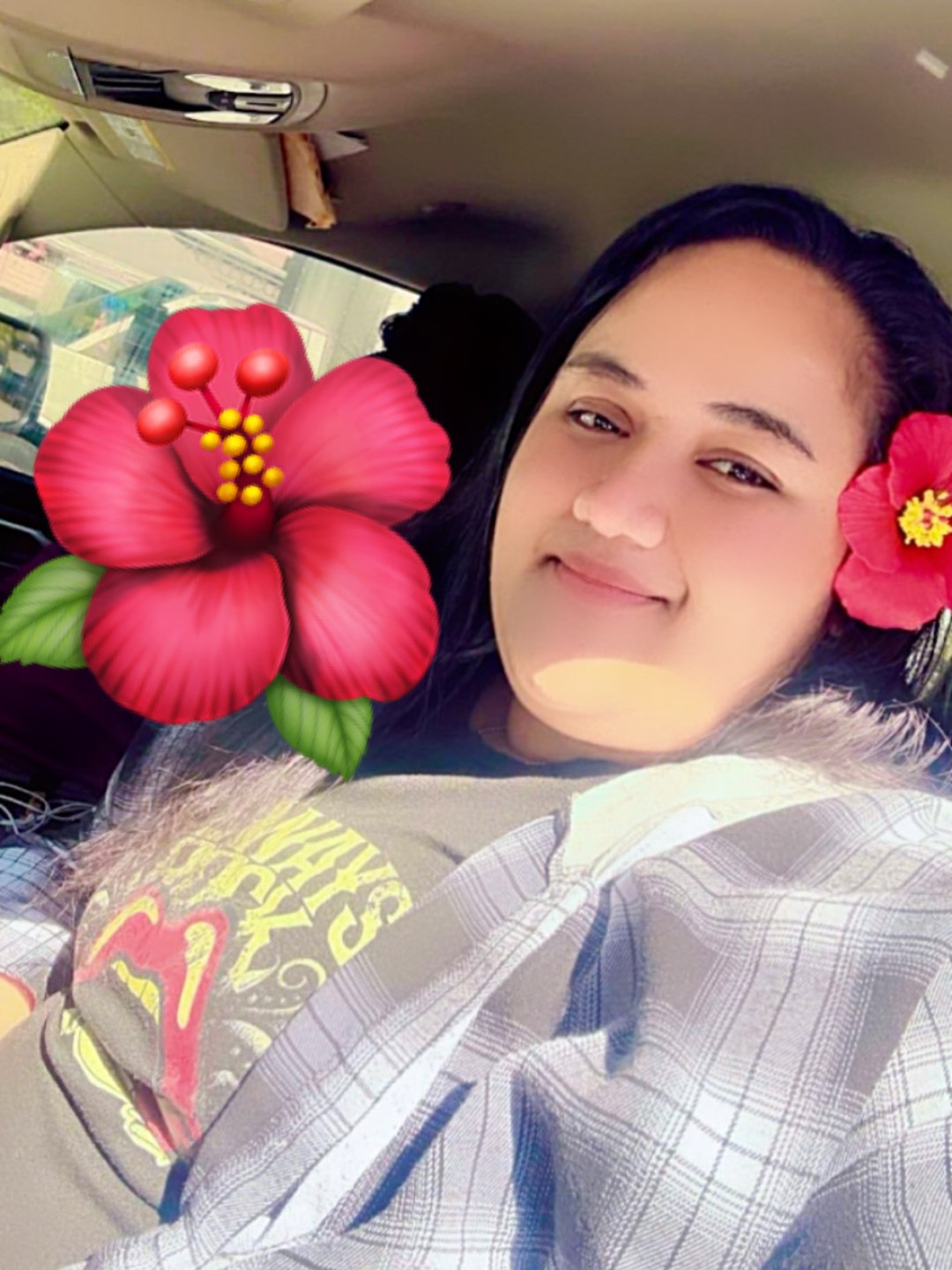 |
 |
Happy DSP Appreciation Week
September 9, 2025

Happy DSP Appreciation Week
September 10, 2025
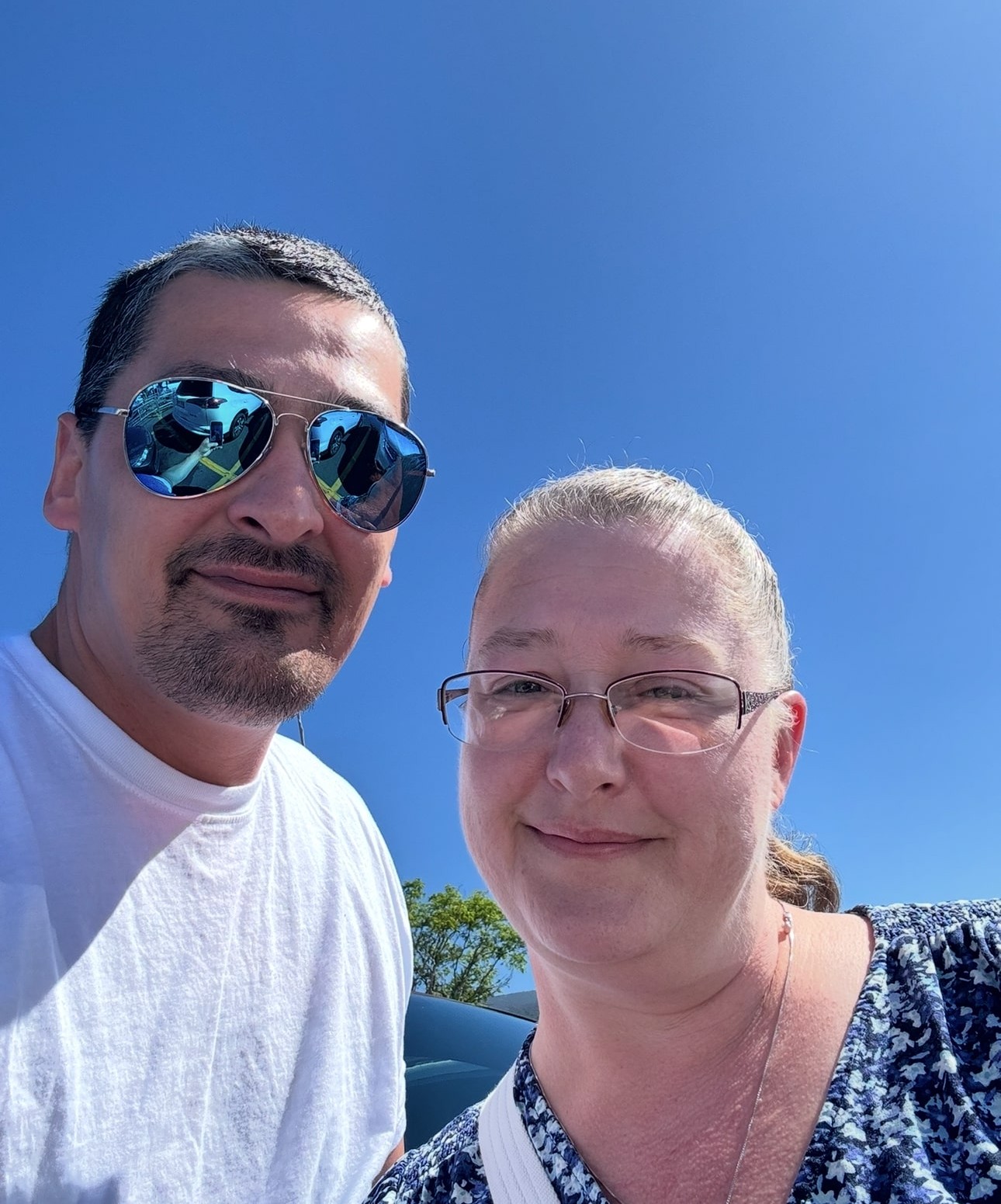 |
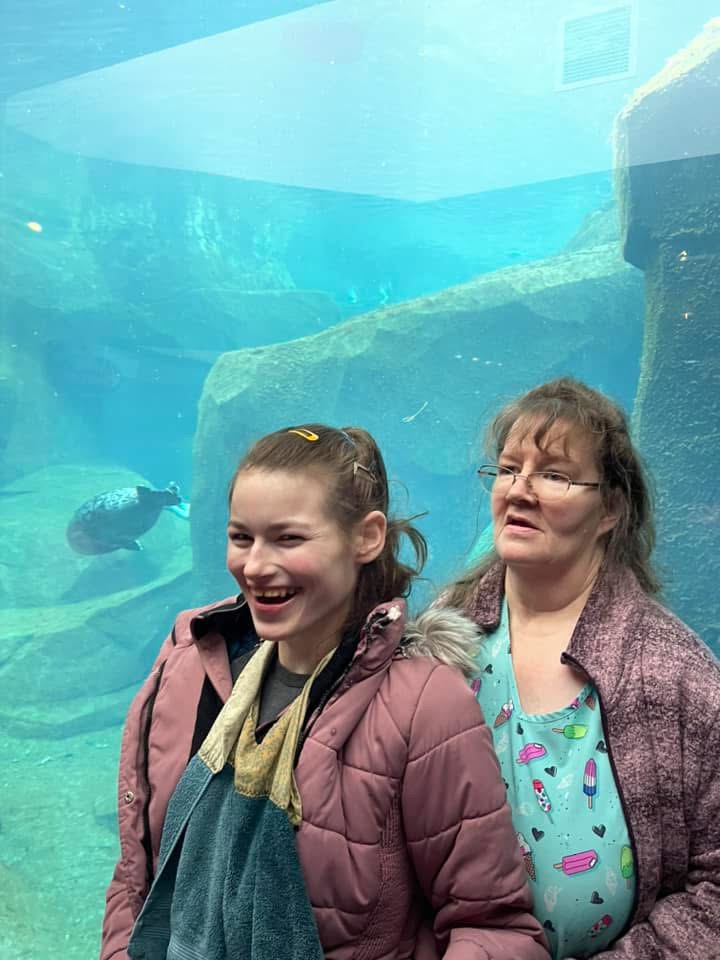 |
Happy DSP Appreciation Week
September 8, 2025
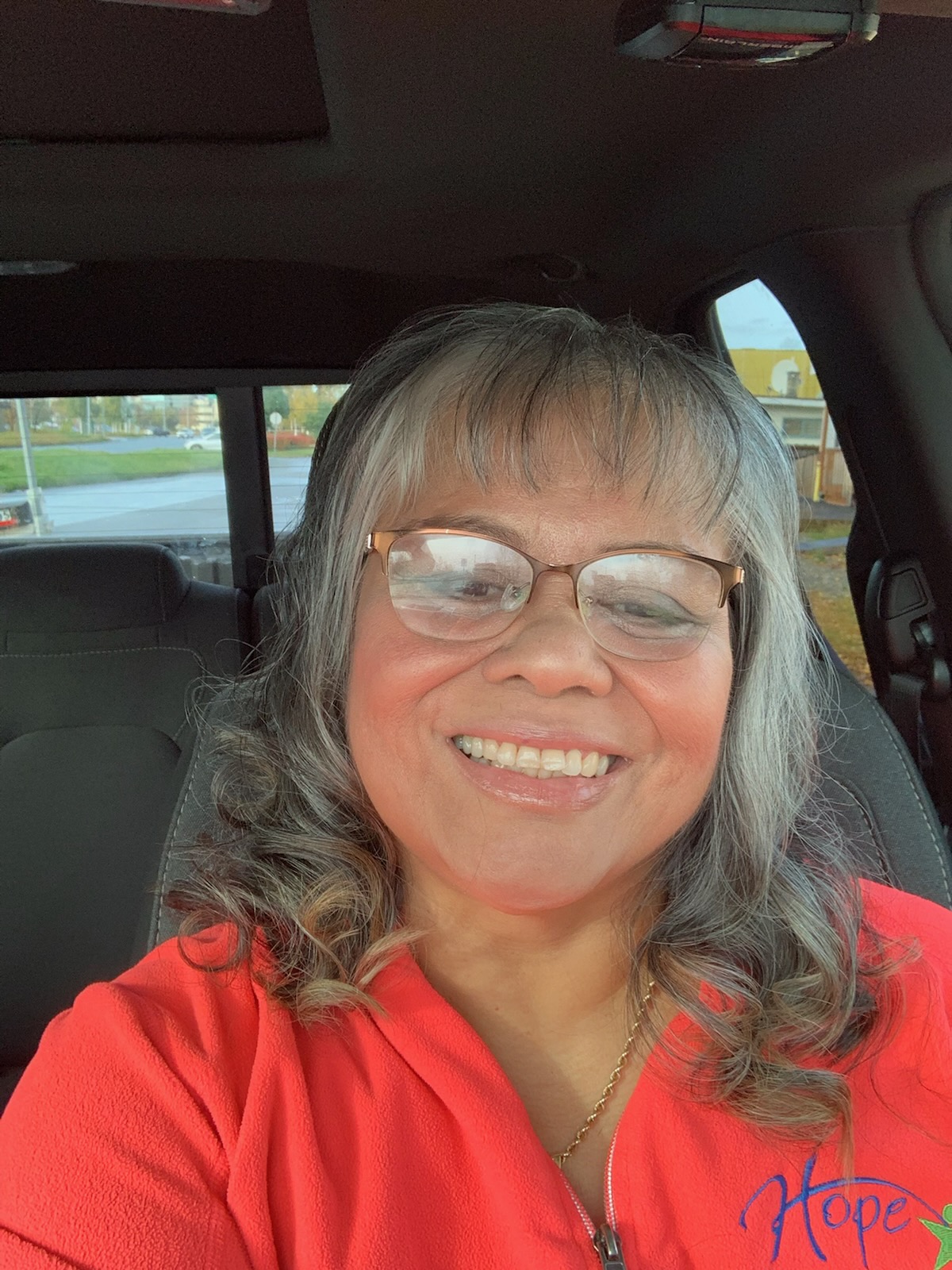 |
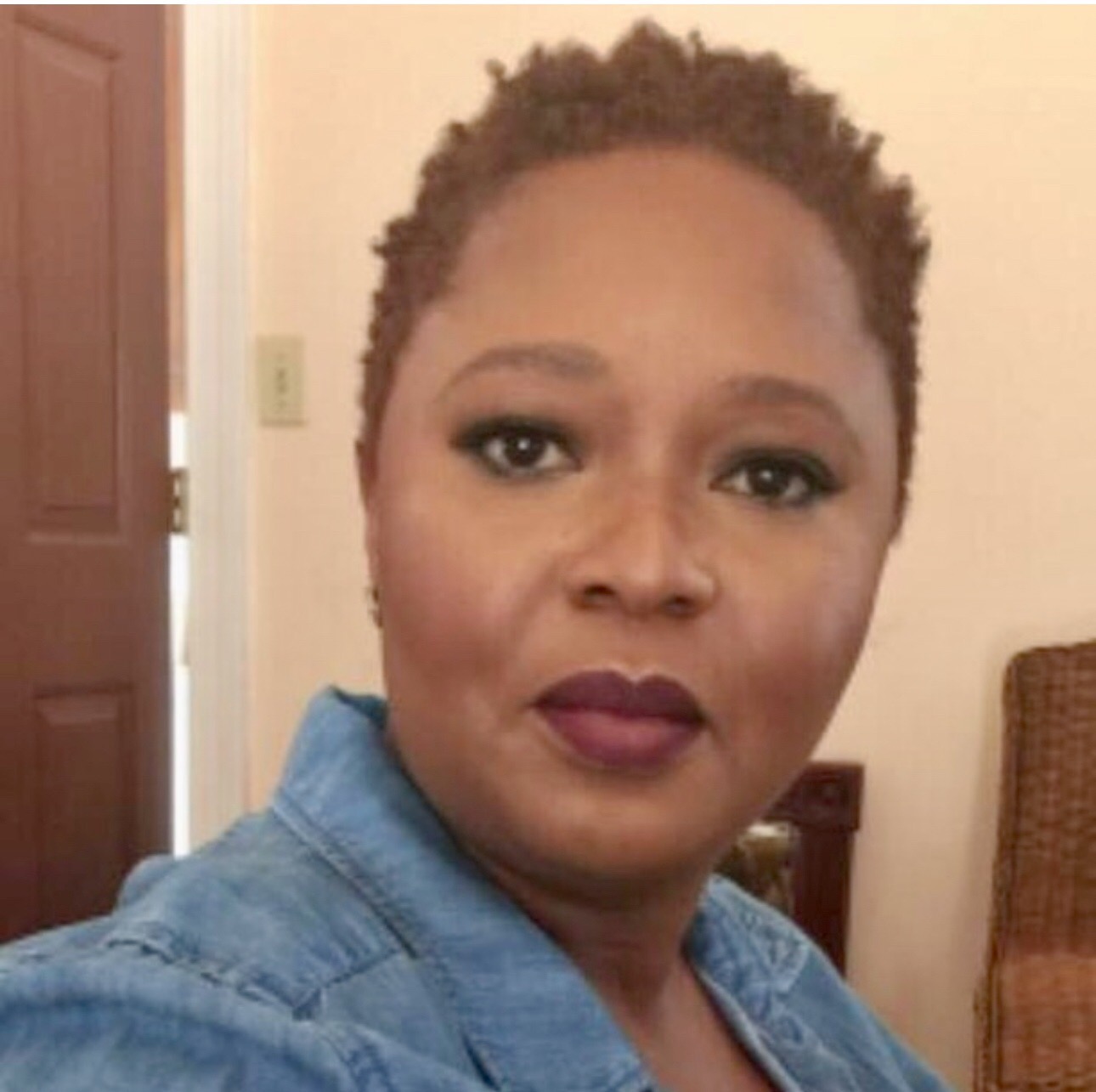 |
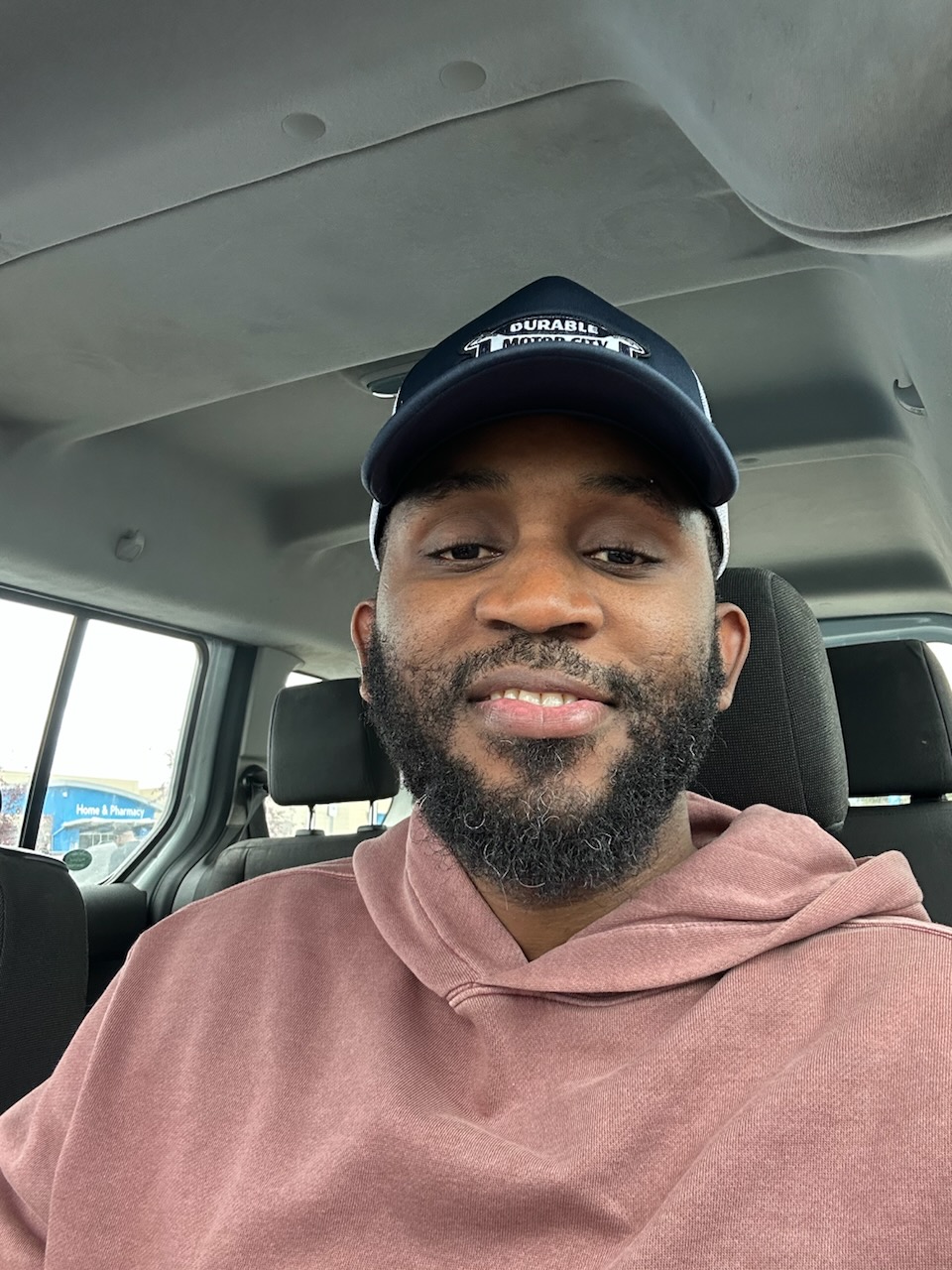 |
Stories of Hope | A Summer to Remember
August 29, 2025
A Summer to Remember
Stories from our Community Engagement Summer Camp
Summer is coming to an end, and we've made some great memories and shared wonderful activities that made this season so special. One of the highlights was our Community Engagement Summer Camp, a seven-week program filled with adventures, new experiences, and friendships. We’re excited to share some of the stories that made this year’s camp so special.
This year's Camp brought together 13 amazing young campers, including three brand-new participants! Together with our Lesko Discovery Center team, they explored Southcentral Alaska, with more than 20 park visits and guided excursions ranging from Anchorage to Willow to Girdwood. The campers especially loved the Reindeer Farm in Palmer, the private tour, planetarium show, and science demonstrations at the Anchorage Museum, and the Botanical Gardens, where they participated in a scavenger hunt and "Nutrition in the Garden" cooking class. Other highlights included the Anchorage Trolley Tour, a Fourth of July barbecue, and a karaoke party to celebrate the last day of Camp. In between excursions, campers also participated in recycled art projects, themed activities, group games, and visits from community partners like the Anchorage Fire Department, Alaska Native Heritage Center, and more. These partnerships gave campers hands-on learning, exposure to Alaska’s history and culture, and unforgettable experiences they would not have had otherwise.
Camp Stories
Each camper experienced moments of growth and joy. One camper, Lindsey, who usually prefers quiet activities like coloring, listening to music, and reading, impressed everyone with her kayaking skills—confidently crossing the lake and showing off her strength and independence. Her mother said, "Lindsey loved [Camp] and it got her out and about and doing many fun things she may have not ever done. Our family is thankful for this camp that Lindsey has got to participate in. We appreciate the opportunity."
In the play area at the Aviation Museum, the campers took turns playing pilot, navigator, and passenger—they loved making their own announcements, offering food and beverage service, and choosing the next destination for "Hope Airlines." One camper conquered her fear of the dark at the planetarium show and the movies and tried every activity that was offered to her. At the Pioneer Peak “you-pick” farm, the group encountered an unexpected rainstorm and used giant rhubarb leaves as makeshift umbrellas. At the karaoke dance party on the last day of Camp, the campers sang, wore costumes, and waved twirling ribbons, making it the best way to end such a fun summer together.
Parents consistently shared their gratitude and expressed appreciation for the team’s care and commitment, and many shared excitement about returning next year and even transitioning into adult programming at the Lesko Discovery Center. One grandparent said their non-verbal camper came home in a good mood every day, and another parent described the program as “the best we’ve seen.”

Our Camp Staff
Camp was made possible thanks to our Community Engagement staff. This year, our Discovery Center team was strengthened by the addition of our Community Engagement Recreation Coordinator, Kate Zagar (left). Kate joined our team after several years of corporate work, seeking more meaningful and purpose-driven work. From the beginning, she has had exceptional drive and determination to deliver the highest quality services, and she has enriched our programs with her innovation and creative energy.
Throughout Camp, Kate was present every day alongside staff, working to ensure the program ran smoothly. She made it her mission to connect with each camper and their families, welcoming each one personally and developing those relationships. She showed exceptional commitment to inclusivity, taking a hands-on approach to support campers with intensive needs and making sure everyone had the opportunity to participate fully. When asked what she enjoyed most about leading this year's Camp, she said, "The campers! Getting to know someone over the course of seven weeks and seeing their face light up after trying something new is incredibly special. I was constantly amazed by all the things they were passionate about." Kate's leadership, creativity, and compassion have elevated the Discovery Center’s work, and we are deeply grateful for the impact she—and the entire camp team—made in creating a welcoming, inclusive environment for all.
Looking Ahead
We are already planning for Summer Camp 2026, with goals of building partnerships with schools to welcome interns, expanding music and theater programming, adding camping and outdoor skill days, and inviting family members to volunteer so they can experience Camp alongside their loved ones. We hope to continue offering an wide variety of meaningful experiences for campers.
How You Can Help
Our Summer Camp thrives with the support of our community. You can make a difference by donating to help keep Camp affordable, volunteering your time or talents, suggesting activities and excursions, or connecting us with musicians, artists, or other community partners. We are especially interested in adding music and theater components next year. If you have an alma mater with a disability program or know someone who might like to collaborate, please reach out—we’d love to connect.
Contact our Community Engagement team
Check Out Some of Our Favorite Photos

